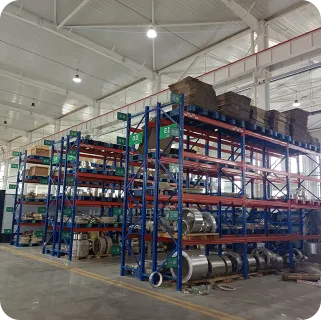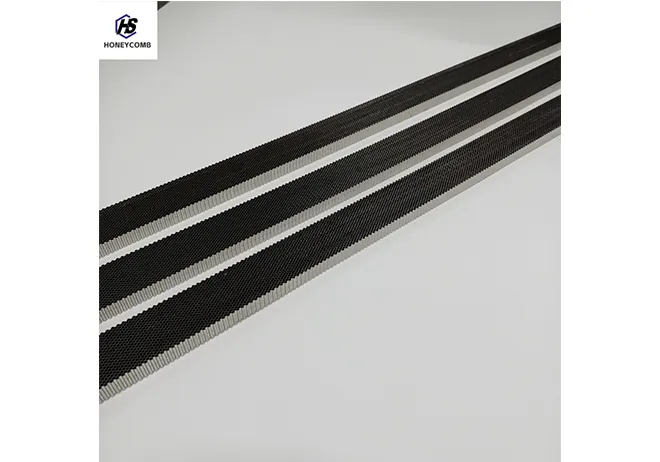
- Afrikaans
- Albanian
- Amharic
- Arabic
- Armenian
- Azerbaijani
- Basque
- Belarusian
- Bengali
- Bosnian
- Bulgarian
- Catalan
- Cebuano
- China
- China (Taiwan)
- Corsican
- Croatian
- Czech
- Danish
- Dutch
- English
- Esperanto
- Estonian
- Finnish
- French
- Frisian
- Galician
- Georgian
- German
- Greek
- Gujarati
- Haitian Creole
- hausa
- hawaiian
- Hebrew
- Hindi
- Miao
- Indonesian
- Italian
- Japanese
- Javanese
- Malay
- Persian
- Portuguese
- Punjabi
- Russian
- Spanish
- Swahili
- Telugu
- Vietnamese

Jan . 22, 2025 04:31
Back to list
Stainless Steel 304/316L Honeycomb Core for Air Flow Straightener
Steel honeycomb structures have revolutionized industries ranging from aerospace to architecture, offering unparalleled strength, flexibility, and efficiency. These lightweight yet robust materials are making waves globally, hailed by experts as a critical advancement in material science and engineering.
Experts advocate for the honeycomb's application in renewable energy sectors as well. Photovoltaic panels and wind turbine components benefit significantly from the lightweight yet sturdy nature of steel honeycombs. As the globe steers towards sustainable energy sources, these materials have proven indispensable in supporting infrastructure capable of withstanding variable environmental elements while enhancing performance efficiency. In terms of real-world applications, case studies reveal notable projects using steel honeycombs. The Tokyo Skytree, for example, successfully incorporated this material to reduce seismic forces during earthquakes, thereby showcasing its protective benefits in disaster-prone areas. Similarly, automotive companies have worked on prototypes that incorporate steel honeycombs, resulting in lighter vehicles without compromising safety standards, thus appealing to both manufacturers and consumers seeking eco-friendly alternatives. Developers and industrial designers trust steel honeycombs not only for their unrivaled functional advantages but also for their ease of customization. Each panel can be tailored to suit specific project requirements—whether that involves size, density, or core configuration—epitomizing versatility and adaptability in design solutions. Such customizable nature enhances the panel's trustworthiness and reliability across diverse applications. Thus, steel honeycomb structures are not just a technological marvel; they embody an innovative leap towards smarter design and engineering solutions. As the global market seeks products that exemplify both performance and sustainability, steel honeycombs stand out as a definitive answer. Professionals across sectors value their credibility and authority in transforming traditional material constraints into new opportunities for innovation and growth. Such advancements underscore the necessity of interdisciplinary expertise and collaboration, driving forward the future of design and engineering.


Experts advocate for the honeycomb's application in renewable energy sectors as well. Photovoltaic panels and wind turbine components benefit significantly from the lightweight yet sturdy nature of steel honeycombs. As the globe steers towards sustainable energy sources, these materials have proven indispensable in supporting infrastructure capable of withstanding variable environmental elements while enhancing performance efficiency. In terms of real-world applications, case studies reveal notable projects using steel honeycombs. The Tokyo Skytree, for example, successfully incorporated this material to reduce seismic forces during earthquakes, thereby showcasing its protective benefits in disaster-prone areas. Similarly, automotive companies have worked on prototypes that incorporate steel honeycombs, resulting in lighter vehicles without compromising safety standards, thus appealing to both manufacturers and consumers seeking eco-friendly alternatives. Developers and industrial designers trust steel honeycombs not only for their unrivaled functional advantages but also for their ease of customization. Each panel can be tailored to suit specific project requirements—whether that involves size, density, or core configuration—epitomizing versatility and adaptability in design solutions. Such customizable nature enhances the panel's trustworthiness and reliability across diverse applications. Thus, steel honeycomb structures are not just a technological marvel; they embody an innovative leap towards smarter design and engineering solutions. As the global market seeks products that exemplify both performance and sustainability, steel honeycombs stand out as a definitive answer. Professionals across sectors value their credibility and authority in transforming traditional material constraints into new opportunities for innovation and growth. Such advancements underscore the necessity of interdisciplinary expertise and collaboration, driving forward the future of design and engineering.
Products categories
Latest news
-
Why Vented Aluminum Honeycomb Is Leading the Way in Shielding and Ventilation SolutionsNewsJul.18,2025
-
Why Stainless Steel Honeycomb Panel is the Ultimate Choice for High-Tech Shielding and ProtectionNewsJul.18,2025
-
Why Honeycomb Strips Are Revolutionizing High-Speed Sealing SolutionsNewsJul.18,2025
-
Shielded Glass Innovation Powers the Future of Electromagnetic ProtectionNewsJul.18,2025
-
Precision Starts Here: Revolutionizing Airflow Control with Honeycomb Wind Tunnel SolutionsNewsJul.18,2025
-
Elevate Industrial Performance with Precision-Engineered Steel Honeycomb Core SolutionsNewsJul.18,2025
-
Vented Aluminum Honeycomb: A Smart Shield for Airflow and EMI ControlNewsJul.11,2025















